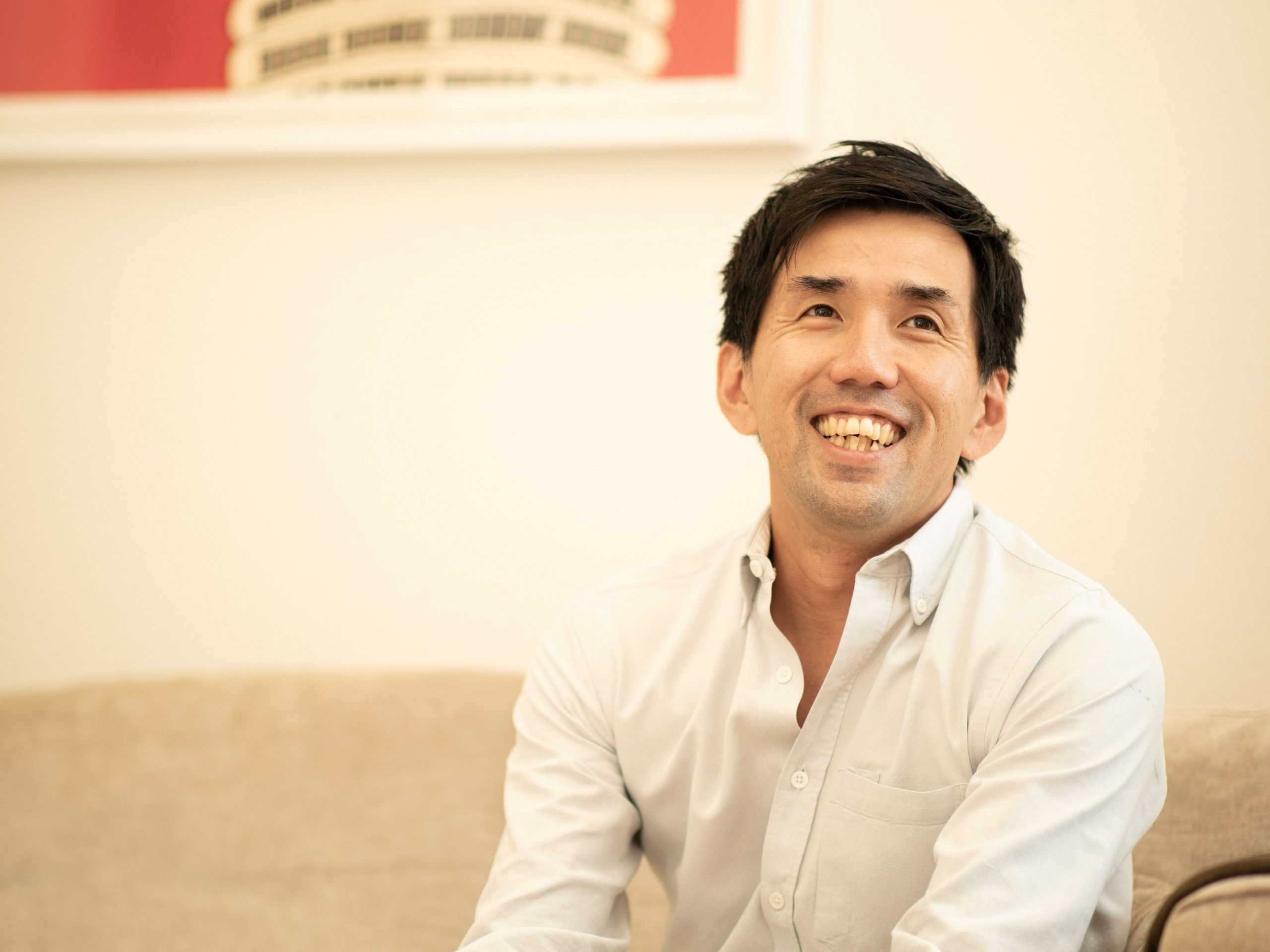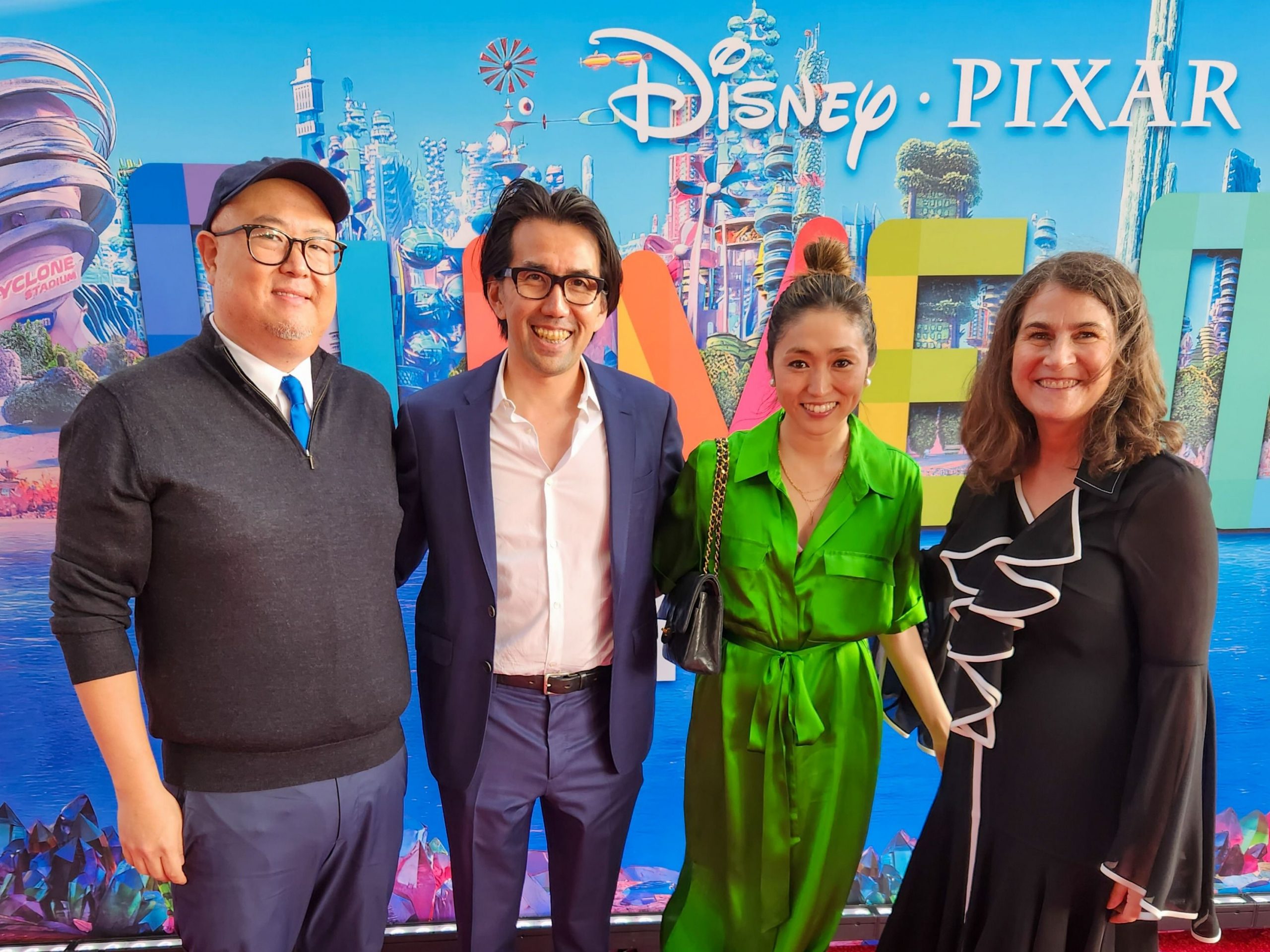
Shinnosuke Miyazawa is a music editor and score mixer in Hollywood, where his credits include everything from Wall-E to Revolutionary Road to A Man Called Otto to the 2023 Pixar film Elemental. But he’s also been involved in the world of anime, and in dubbing American films into Japanese. Miyazawa spoke to Otaku USA about how he helps with cooperation between Japanese and American creatives, how Hollywood is paying more attention to anime, and the experience of dubbing Sing into Japanese.
Because this is Otaku USA, we’re most interested in your work with anime. You worked on Her Blue Sky, correct?
Sure. I would love to talk about Japanese work, too. That’s the reason I’m here now, in Japan, to help Japanese content to come out in the world. I do a lot of collaboration work between Japanese composers and anime makers to give ingredients of Hollywood sound sometimes to Japanese anime, to enhance the experience in the movie theater.
And, yes, I did work on this movie [Her Blue Sky].
What has your work been in anime?
At this moment, for this movie [Her Blue Sky] I worked as the score mixer and score producer. I think we recorded it in the USA with American musicians. I helped coordinate the recording session in the US and helped the composer to pick the players in the US and helped them cooperate together.
Did you work for Hollywood before you worked on any anime?
Yes, I did. I’ve been working in Hollywood since 2006. I have quite a long history working in Hollywood.
How did you go from Hollywood to anime?
A lot of Japanese composers or creators look for new sound all the time, and a lot of them like Hollywood sound. But a lot of them don’t know because it’s a different country and different style, how to find that particular sound which they are looking for. So usually they reach out to me to discuss how can we get that texture of Hollywood sound. Which makes it kind of a newer style of music. That’s usually what they’re looking for. They’re looking for a new palate for their creativity and they reach out to me to help them.
Have many people reached out?
They have! They have! They still do. The past 20 years, I’ve worked with quite a few composers, cooperating. They’re always curious about how Hollywood works. I guess Hollywood is the movie example. I think they look for the epic-ness or the higher artistry style of a Hollywood movie. They always want to get the knowledge of that to use in their creativity.
What have you taught them about Hollywood?
I tell them about how we do the production, or what the composition process is for Hollywood composers, because I work with Hollywood composers like Thomas Newman. So I discuss his process or other people’s process, how they compose, how they talk to the director, how they pick the musicians, how they mix the music, how they record the music, how they put the music onto the screen. The overall production process of how they do the work. They get an idea from what we discuss and then we put it into practice if it’s possible.

What are the differences between Hollywood and anime that you’ve seen when it comes to music?
I think the biggest difference is the budget and time [laughs]. But there are things you can accomplish without a huge budget. The sound of Hollywood is sometimes orchestration, sometimes it’s how you mix, sometimes how you do a little trick in the production. You can accomplish a lot of stuff. Sometimes it’s not about how you do it so much, where you do it, it’s about how you think about doing it. The different perspective I share with different composers and producers. I give them new ways to do the production and try to put that into the practice, try for them to experiment making the music in a different way, which makes the music something new, and we hope there will be some great reaction to that.
The anime people are interested in Hollywood. Are the Hollywood people you work with interested in learning more about anime?
I think more and more nowadays. Time has changed. I think anime has been a more and more niche genre before, when I started. But as I progressed, my career, I think people are paying more attention. Especially the original content, the IP, the characters, the story, the plot, I think that has people more interested in animation now than 20 years ago, which is a huge change for me.
Besides the music and the budgets, how are things different in Hollywood and anime?
How they approach the music production is quite different. How they treat the sound is quite different, too. Anime, it used to be, for a younger audience, children, teenagers, so they mixed the music slightly catered to the TV show. How they tell the drama is quite different. In anime, they explain the drama way more than Hollywood movies. I think the way Japanese animation was explaining the story by the music, I think nowadays Hollywood animation is kind of following that. I see that sometimes in Hollywood animation nowadays. Storytelling is quite different in Japanese animation than in American animation, and American live action for sure.
How have you been involved with dubbing American movies in Japanese?
Oh, you’re talking about Sing?
Yes, Sing.
Sing was a very particular special movie. It was kind of a half musical show with lots of songs sung by famous people like Taylor Swift. They spent like three years making that movie and recording a lot of very talented musicians and getting the rights to re-record this famous music, like Frank Sinatra or Taylor Swift, to put in the movie. When they went to Japan to broadcast it, the American production team was very worried that the American movie would be destroyed by doing the Japanese dub version. The director for Sing really wanted to do the Japanese dub version because he wanted to reach as much of an audience in Japan as possible. He understood that Japanese local content is very strong. Which it is. A lot of Japanese people don’t really see foreign animation, because [they have] Pokémon, Super Mario, Hayao Miyazaki. Now they’re showing Hayao Miyazaki’s latest movie and everyone is talking about it, and not many people are paying attention to foreign animation. So that’s the market of Japan because local content is very strong.
So they wanted to reach out, but the worry is they would lose some ingredients, the intimacy, or the artistry, along the way of dubbing. It would have to be sung by all these Japanese singers, all these songs. So they wanted to have someone who understood Japanese productions and American production and oversee everything. That’s the reason why I became music supervisor in the dubbing version. It was a very interesting experience for me, being between Japanese production and American production and being the bridge for these totally different ways of thinking.
How was the experience?
I think we did quite well. Sing was quite a big hit for six or seven weeks in Japan, the dubbed version, and we got really great feedback from a lot of artists from Japan about how well it was dubbed in Japanese. I think we accomplished keeping the feeling of the American version but translated that to the Japanese version.
____
Danica Davidson is the author of the bestselling Manga Art for Beginners with artist Melanie Westin, plus its sequel, Manga Art for Everyone, and the first-of-its-kind manga chalk book Chalk Art Manga, both illustrated by professional Japanese mangaka Rena Saiya. Check out her other comics and books at www.danicadavidson.com.

